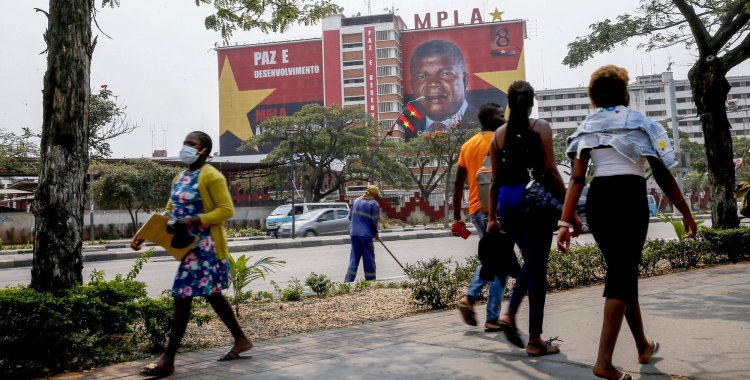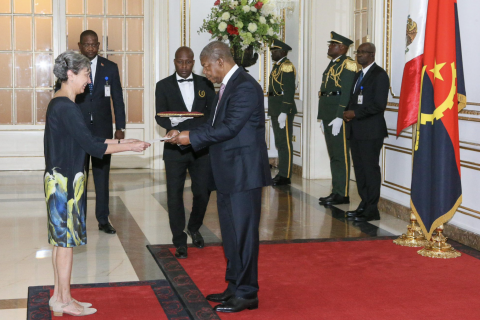The summary and final considerations, resulting from a cycle of three sessions held in January and March of this year by the Reflection, Counseling and Debate Group of the Science and Humanities Laboratory of the Catholic University of Angola, were presented on Monday.
Reflection focused on the following topics "Historical Background, Post-Independence Initiatives and the Chronology of the new DPA [political-administrative division]", "Impacts of the DPA on the Citizens' Daily Life", "The Issue of Human Resources and the DPA" and "The Financial Impacts of DPA".
On October 15, 2022, the President announced the proposal for a new political-administrative division, which presupposes the extinction of communes and urban districts, and the creation of 581 new municipalities, against the current 164 municipalities, a document that was submitted to consultation public between December of last year and January of this year.
Regarding public consultation, the promoters of the joint analysis with the Political and Social Observatory of Angola (OPSA) and Action for Rural Development and Environment (ADRA) recommended more inclusion, openness, transparency and "investment in a new and broad public consultation process, inclusive, plural and participatory".
Regarding the financial impacts of the new DPA, the comparative analysis between the costs of the existing one and the proposal, revealed that the current administrative division, when its organic tables are completed, will cost the General State Budget (OGE) the equivalent of 701 million dollars/year.
As the 2023 OGE has expenses for goods and services in this item equivalent to 769 million dollars, the total costs of the current DPA will reach around 1.4 billion dollars, without infrastructure investments that, this year, have an endowment equivalent to 868 million dollars.
"In view of these data, the total expenditure on the current DPA to be borne by the 2023 OGE, even with its very incomplete frameworks, already exceeds two billion dollars", says the analysis.
According to the document, the new DPA, when implemented and operating with its complete organic staff, will cost, "only in salaries for its expected 307,865 employees, including the isolation allowances now created, the equivalent of 1,700 million dollars/year, that is, 153 percent more than the current one", indicates the document.
"But extrapolating the values of Goods and Services of the current DPA in the OGE of 2023, with its 164 municipalities, to the total proposed in the new DPA - plus 518 new municipalities - we reach the equivalent value of 2.1 billion dollars/year, that is, an increase of 181 percent", highlights the survey.
"Thus, the new DPA, after implementation in wages and goods and services alone, will cost the equivalent of 3.9 billion dollars/year, that is 168 percent more than the current one. As the new DPA implies investments in Infrastructure, they were calculated with data from the investments made over the years, reaching a total estimated at the equivalent of 1.8 billion dollars", he adds.
Assuming that the necessary infrastructures for the new municipalities would be built in five years, the document points to "an increase in expenses that, temporarily, will reach in total – wages, goods and services and infrastructures – the equivalent of 4.3 billion dollars/year".
For the group, the pertinence of the new DPA should be reassessed as a "strategy of approximation between citizens, government and administration" to the detriment of the process of decentralization and establishment of local authorities.
It is also necessary, they point out in the recommendations, that the advantages of the new DPA be demonstrated, namely social, economic and environmental advantages, for local communities and in regional terms.
The analysis considers that the public consultations carried out "are far from meeting minimum parameters".
"The paradigmatic case is that of Luanda. With a population estimated at around eight million inhabitants, it is very unreasonable to expect that the public consultation of approximately 100 citizens will be considered necessary and desired, in addition to not being legitimate", observe the document.
Speaking to the Lusa agency, the co-founder of the Laboratory of Social Sciences and Humanities at the Catholic University of Angola, Cesaltina Abreu, said that the analysis of this process demonstrates that there have been "interests other than those of its population".
"First the colonial interests and now the political interests of those who have the power to decide and do so without really including the people in this process," she said.
Cesaltina Abreu underlined that "there is a cultural base that has not been taken into account at all", because the structure of the division is maintained based on what was done in the colonial era, "mainly in the aspect of continuing to divide social groups, with artificiality of borders and without taking into account the cultural background" and the belonging "of the people in these areas to certain socio-cultural groups".







